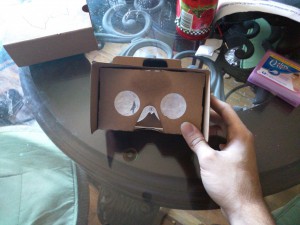Social media is a way for people to share content, either personal or public, to a website or application where other people can view. Through social media, we can gain other people’s insight on a certain topic and make friends. It is a great way of keeping up with trends and being socially active. Some people believe social media to be a major distraction and an unnecessary time consumer but I find it to be a way for everyone to connect and relate to each other. In this essay, I will discuss how social media impacts individuals both emotionally and cognitively along with how it can effect visualization in the workplace.
Social media has been really extremely popular when it comes to surfing the web and has been known to be one of the largest time consumers. It has also given people a way to make friends easily and has opened up new opportunities for people that are socially or physically impaired to build relationships. Raymond Tay wrote an article listing both the positive and negative impacts of social media on society. In his article, Impact of Social Media, he mentioned how President Barack Obama gathered supporters and voters through the use of social media. Obama had made about 5 million friends on more than 15 different social media sites which attracted visitors to his website, MyBarackObama.com.
Social media was also known to help and support countries that underwent a natural disaster. Tay stated, “In 2010, after the earthquake happened in Haiti, many of the official communication lines were down. The rest of the world was not able to grasp the full picture of the situation there. To facilitate the sharing of information and make up for the lack of information, social media came in very handy to report the news about the affected area on what happened and what help was needed. Tweets from many people provided an impressive overview of the ongoing events from the earthquake. BBC covered the event by combining tweets from the work of its reporter Matthew Price in Port-au-Prince at the ground. Guardian’s live blog also used social media together with the information from other news organizations to report about the rescue mission. The most impressive part of the social media’s impact on Haiti is the charity text-message donations that soared to over $10 million for the victims in Haiti. People interested in helping the victims are encouraged to text, tweet and publicize their support using various social networking sites. The Global Philanthropy Group had also started a campaign to ask wealthy people and celebrities, like Ben Stiller and John Legend to use Twitter and Facebook to encourage others to give to UNICEF” (Tay, par 8). After this crisis, social media began to be viewed as a positive impact on the world.
Although social media is known for its ability to form and strengthen relationships, it has also been known for its ability to tear relationships apart because of its “variations of depression caused by the lack of meaningful quality relationships” (Anderson, par 8). According to Tay, privacy breaching is one of the most common problems with social media. Tay states, “The challenge in data privacy is to share data while protecting personally identifiable information. Almost any information posted on social networking sites is permanent. Whenever someone posts pictures or videos on the web, it becomes viral. When the user deletes a video from his/her social network, someone might have kept it and then posted it onto other sites like YouTube already. People post photographs and video files on social networking sites without thinking and the files can reappear at the worst possible time. In 2008, a video of a group of ACJC (Anglo-Chinese Junior College) students hazing a female student in school on her birthday was circulated and another video of a SCDF (Singapore Civil Defense Force) recruit being welcomed to a local fire station made its way online.”
A group of researchers did a study with Facebook users in order to prove how social media could impact emotion either negatively or positively. They had Facebook remove positive posts from the news feeds of more than 680,000 users and noted that these specific users began to make less positive posts and more negative ones. The opposite happened when they removed negative posts from certain users. Tanya Lewis in her article, Emotions Can Be Contagious on Online Social Networks, proves that emotions are contagious and can spread amongst people without their awareness. In a study that took place in January 2012, researchers selected 689,003 random Facebook users and once again manipulated the number of positive or negative post that they could view on their timeline. The researchers used a word counting software which determined whether a post was negative or positive and removed a percentage from the user’s timeline. According to Lewis, “On average, about twice as many posts contained positive words (47 percent) as contained negative words (22 percent), so the researchers removed a proportional number of posts of each kind” (Lewis, page 2). The results were the same and in addition, they found that people who saw fewer emotional posts were just less expressive.
Cognition is the way we acquire knowledge and understand it. It can be acquired through any of your five senses and can be interpreted based on past experiences. Social media has had an extensive grip over the way people see or understand things. A great example of this is shown by an experiment done by a researcher in the Department of Journalism & Communication named Janey Lee. In this experiment, Lee used photos of both older and younger candidates to measure the impact of Facebook user comments on young voters. Lee discovered that young voters trust older users’ evaluations more than they do other fellow younger users. We can conclude from this study that there are many factors that influence political impressions in social media such as the type of comment or the age of the commenter.
While many think that social media have a positive outlook towards the way we think, others may argue that it has a negative or no correlation at all. Researchers Jesse Fleck and Leigh Johnson-Migalski conducted a research project called The Impact of Social Media on Personal and Professional Lives: An Adlerian Perspective to inform us about changes within both our professional and personal lives due to social media. Unfortunately the research resulted in social media having a negative effect due to a higher ratio of negative post compared to the positive posts. A similar research project orchestrated by Esam Alwagaita, Basit Shahzada, and Sophia Alim showed that social media usage actually had no correlation when it came to academic performance. In their project, Impact of Social Media Usage on Students Academic Performance in Saudi Arabia, they evaluated the number of hours students spent on social media within a week and the GPA scores of the college students. However, the scatter plots showed that there was no correlation between the two subjects due to the students’ great time management systems.
Saad Kabir, a high school student, claims to spend about 4 hours a day on all of his social media sites. After being asked for his response to social media’s impact on cognition, he spoke of him using social media as a news source. Kabir stated, “I find social media very useful when it comes to acquiring knowledge because its actually my primary source for news. For example, the terrorist bombing in France was completely in the dark to me until I logged onto Facebook and checked my feed. Upon entering, I saw a whole bunch of posts and links to articles relating to the event” (Kabir, par. 6). An interview with Janita Karran, a middle aged woman, seems to share a similar view to social media’s impact on cognition. After being asked how she acquires information from social media and if it affects the way she views certain information, she replies saying that often times she is surprised after reading other people’s insight towards certain topics. She gives an example of this by saying, “After hearing about Donald Trump’s idea to temporarily ban Muslims from entering the country, I was certain that he would do whatever it took to protect the people. However, after reading some of my Muslim friends’ comments and posts towards this idea, I too understood what he was proposing was madness and negated what America stands for” (Karran, par. 7).
Visualization is the way we see something in our minds and the ability to form mental images. Our brains process visual information rather quickly and when it comes to social media, data visualization is a very useful tool. Often times, the sharing of visual content will often result in a higher level of engagement compared to just posting plain text. John Dietrich in his article, Data Visualization for the Social Media Pro, provides to us some different tools that we can use in social media sites to help improve visualization amongst other users. Dietrich states, “Social media tools tend to focus on visualizing the data being collected and are an indispensable resource for social media professionals. There are a lot of tools available for the many social media networks out there, but again, those that focus on visualizing data tend to provide better results” (Dietrich, par 3). Simple graphs and charts can be used just to capture a user’s attention along with giving them additional information rather than having them read the information from text.
Many people find visualization within social media to be positive influence but can the same be said for employees in the workplace? According to Donna Ballman, nearly 90 percent of companies use social media for business purposes. Half of these companies allow employees to use social media for non-business activities. However more than 70 percent of these employers report having to take disciplinary action against employees for misuse of these privileges. While many companies felt like they had enforce harsher restrictions or keep a closer eye on employee social media use after hearing this news, Ballman had a totally different reaction. Ballman stated, “Holy cow! Seventy percent of employers not only monitor employee social media but are disciplining employees for expressing incorrect views. I have to ask, what the hell are we coming to when employers think they have the right to monitor and control employees’ opinions expressed on their own time in their own blogs, Facebook pages or other social media. What kinds of things are employers monitoring and cracking down on?” A study from the company Proskauer tells us that 80 percent of the surveillance goes towards misuse of confidential information. About 71 percent goes toward misrepresenting the views of the business. Another 64 percent goes towards both disparaging remarks about the business or employees along with harassment. Lastly, 67 percent goes towards inappropriate non-business use.
Even though it was established that employees are constantly being disciplined for social media abuses, it is still proven how the workplace benefits from social media. A company by the name of Advanced Visual Systems works alongside many social media sites to gather information in order to reveal patterns and correlations that are difficult to determine. It’s an efficient system that incorporates various workbench analytical tools in order to create reports for a business’s decision makers. This advanced data visualization is being implemented in many businesses today because of its ability to efficaciously analyze and produce accurate results based of off data gathered from social media sites.
In conclusion, social media impacts society in both positive and negative ways. However the positive seems to outweigh the negatives in a large majority. Social media can impact us in three different ways. It seems to have a large effect on emotion due to a human’s nature to give what you get. Research projects intended to determine how social media impacts emotion shows that we post negatively or positively based on what we see more on our time feeds. Social media also impacts cognition meaning the way we acquire knowledge and understand it. Interviews showed that people use social media as a source of news and that it could also help you to understand a piece of information from someone else’s point of view. Lastly, social media’s grip over visualization is a debate that can be discussed for a long time before coming to a final answer. However, businesses today rely heavily on the feedback received from social media sites which really makes social media a positive influence when it comes to visualization. It is difficult to say whether these results will be accurate 10 years from now but one thing that will remain true is social media’s evolution. Social media will continue to further advance and will be used throughout many lives therefore impacting many others as well. In the future, businesses will probably start finding more efficient ways to profit off of data that they receive from social media sites. After all, social media is a major source of advertising. Establishing a good time management system is a good way to limit social media use for those out there that spend a prodigious amount of time on it.
Works Cited
Alwagait, Esam, Basit Shahzad, and Sophia Alim. “Impact Of Social Media Usage On Students Academic Performance In Saudi Arabia.” Computers In Human Behavior 51.(2015): 1092-1097. Academic Search Complete. Web. 23 Nov. 2015.
Anderson, Janna, and Lee Rainie. “The Future of Social Relations.” Pew Research Center Internet Science Tech RSS. 1 July 2010. Web. 6 Dec. 2015.
Ballman, Donna. “70% of Employers Think Your Social Media Posts Are Their Business.” LexisNexis. 6 May 2014. Web. 7 Dec. 2015.
Beattie, Alex. “Social Media and Its Effects on Our Emotional Well Being.” Social Media and Its Effects on Our Emotional Wellbeing Comments. Metro Blogs, 15 Aug. 2013. Web. 23 Nov. 2015.
Dietrich, John. “Data Visualization for the Social Media Pro.” Social Media Today. 16 June 2015. Web. 7 Dec. 2015.
Fleck, Jesse, and Leigh Johnson-Migalski. “The Impact Of Social Media On Personal And Professional Lives: An Adlerian Perspective.” Journal Of Individual Psychology 71.2 (2015): 135-142. Academic Search Complete. Web. 23 Nov. 2015.
Kabir, Saad. Personal Interview. 30 November 2015.
Karran, Janita. Personal Interview. 7 December 2015
Lewis, Tanya. “Emotions Can Be Contagious on Online Social Networks.” Scientific American Global RSS. Scientific American, 1 July 2014. Web. 23 Nov. 2015.
Thapa, Samita. “Beyond Social Media: The Role of Data Visualization, E-Learning, and Digital Mapping in Diplomacy.” Atlas Corps. 4 Nov. 2015. Web. 7 Dec. 2015.
Weaver, Lauren. “The Impact of Social Media.” The Impact of Social Media. 25 Sept. 2014. Web. 23 Nov. 2015.





